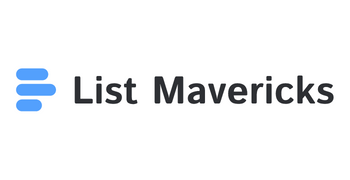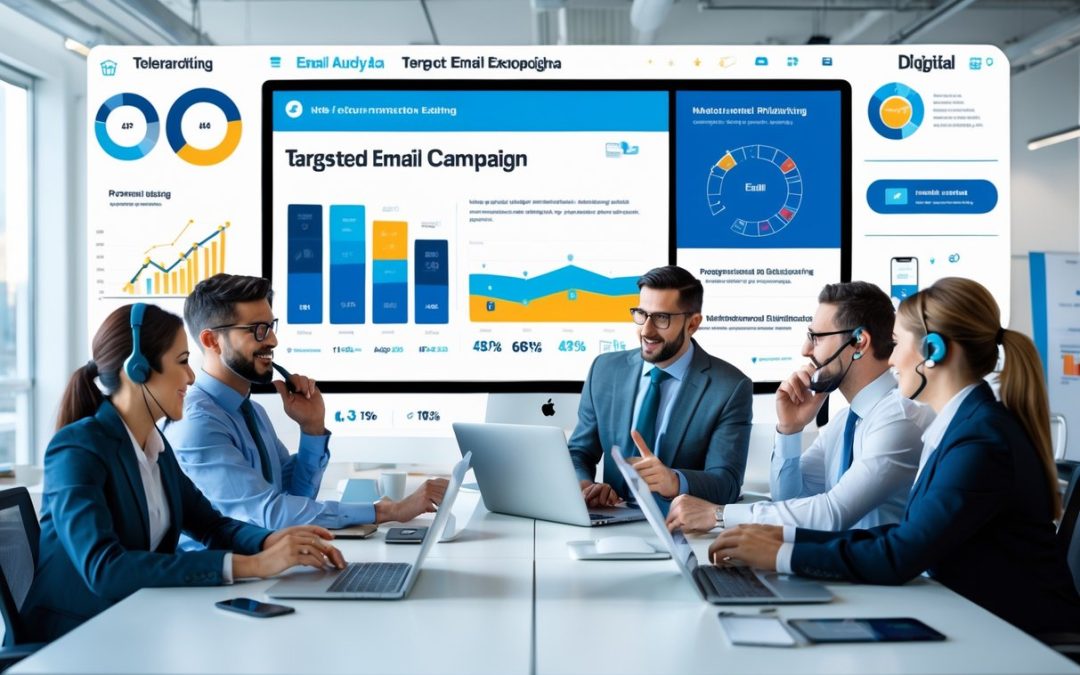Outbound digital marketing puts brands in front of customers where they already are, such as their inbox, social feeds, or favorite websites. The most common types of outbound digital marketing include cold emails, display advertising, and social media ads, all designed to reach potential customers directly and spark interest in a product or service. These techniques are not only widespread but also proven to help businesses find and engage new audiences quickly.
Some companies use outbound digital marketing to send personalized messages or create eye-catching ads that target specific groups of people. This approach makes it easier to reach the right audience at the right time, which can lead to more leads and sales. Curious which methods are making a real impact today and what trends are worth watching? This article covers several practical examples that can help any business better understand and use outbound digital marketing.
Key Takeaways
- Outbound digital marketing reaches customers through direct online channels.
- Knowing popular examples helps businesses connect with new audiences.
- Success depends on choosing the right tools and tracking campaign results.
Understanding Outbound Digital Marketing

Outbound digital marketing means reaching out to people who are not already looking for a product or service. This method uses direct contact, targeted ads, and other push tactics to start conversations and drive sales.
Outbound Marketing vs. Inbound Marketing
Outbound marketing focuses on delivering messages to a broad audience, often interrupting their daily activities. Examples include display ads on websites, cold emailing, paid social ads, and even digital billboards. These tactics aim to find new leads by contacting them first.
Inbound marketing, on the other hand, attracts potential customers through helpful content, SEO, blogs, and social media posts. People are drawn in as they search for answers or products on their own.
Here’s a quick comparison:
| Feature | Outbound Marketing | Inbound Marketing |
|---|---|---|
| Target Audience | Broad, often uninterested | Interested, self-selected |
| Approach | Push (initiates contact) | Pull (attracts visitors) |
| Example Tactics | Cold emails, banner ads | Blog posts, organic search |
| Timing | Marketer chooses | Customer chooses |
Understanding the difference helps businesses choose the right balance in their marketing strategy.
Key Characteristics of Outbound Digital Tactics
Outbound digital tactics are proactive and direct. Marketers use them to reach potential buyers across various digital platforms, even if those people have never interacted with the brand before. Common methods include cold calling, direct messaging on social media, and purchasing ad space on websites.
These tactics rely heavily on data and targeting options to maximize results. For instance, businesses can target ads based on age, location, interests, or browsing behavior. Many outbound efforts are automated, allowing marketers to reach thousands of people at once.
While outbound marketing can scale quickly, it sometimes feels intrusive to the audience. Still, it remains an important part of the marketing mix for reaching new customers.
Benefits and Drawbacks
Benefits:
- Immediate exposure to a large group of people
- Quick feedback and results from outreach
- Targeted approaches can boost lead generation and brand awareness
Drawbacks:
- Many people may ignore or block outbound messages
- Costs for digital ads and email campaigns can add up fast
- Messages can seem intrusive if not targeted or timed well
The pros and cons of outbound marketing depend on the company’s goals and how well tactics are executed. When combined with inbound efforts, outbound can help increase business reach and support a well-rounded digital marketing plan.
Popular Outbound Digital Marketing Examples

Outbound digital marketing uses different digital channels to reach potential customers directly. These methods help brands promote their products, build awareness, and drive conversions using paid or targeted tactics.
Cold Email Campaigns
Cold email campaigns are a direct way for businesses to contact people who have not interacted with their brand before. Companies often use well-crafted cold emails to introduce their services, share special offers, or invite recipients to webinars and events. The key is to make the message personal and relevant, not just generic spam.
Businesses typically segment their email lists by job title, industry, or location to improve their chances of getting a response. Using professional email platforms allows tracking of open rates and link clicks, helping marketers refine their strategies over time. Cold emailing can result in valuable leads if done with a clear call to action and a strong subject line.
The best cold email campaigns focus on respecting privacy, providing value, and following legal guidelines, such as giving recipients the chance to unsubscribe. Successful campaigns often include follow-up emails if there is no reply, which can improve response rates without being pushy. Cold email is still an important outbound marketing example for many B2B companies.
Social Media Advertising
Social media ads allow brands to reach specific audiences on platforms like Facebook, Instagram, LinkedIn, and Twitter. With paid advertising, companies can target users by age, interests, behavior, or location. This targeting helps marketers get their message in front of the right potential customers at the right time.
Social media advertising includes many formats, such as image ads, video ads, stories, and carousel posts. Businesses often use these ads to promote new products, limited-time offers, or company updates. Tracking tools on social networks give clear data on clicks, impressions, and conversions, allowing companies to improve future marketing campaigns.
Running social media ads is a fast and flexible way to increase brand awareness and drive website traffic. Unlike organic posts, these digital ads give more control over who sees the content and how often it appears. More information can be found on how social media ads are a core outbound marketing example at Webmetools.
Display Ads and Banner Ads
Display ads and banner ads appear across many websites, apps, and digital platforms, often as images, animated graphics, or videos. These ads are placed on sites that attract the business’s target audience, making it easier to get attention from potential customers who may not be searching for the company yet.
Banner ads are commonly seen at the top, middle, or sides of web pages. They are designed to stand out and capture interest quickly. They can promote sales, special events, or direct users to landing pages for more information.
By using ad networks like Google Display Network, marketers can set their ads to appear on thousands of partner sites. Performance is tracked through metrics like impressions, clicks, and conversions. Display and banner ads remain a popular outbound marketing example due to their ability to reach large groups of users at once. For more details on display ad strategies, see examples at Shopify.
Search Engine Marketing (SEM) and PPC
Search engine marketing (SEM) uses paid ads on search engines such as Google and Bing. The most common type of SEM is pay-per-click (PPC) advertising, where businesses only pay when someone clicks their ad. PPC ads appear above or beside organic search results when users type in certain keywords.
Advertisers bid on keywords that are important to their business. This means their ads target people actively searching for products or services similar to what they offer. SEM and PPC are valuable for getting quick results and catching potential customers at the moment they are looking for answers.
SEM platforms provide detailed analytics, including the number of clicks, the cost per click, and conversion rates. This data helps marketers adjust their bids and ad copy for better results. SEM and PPC are essential parts of outbound digital marketing because they offer direct access to people who are interested in a specific topic. More information on SEM and PPC can be reviewed at Shopify’s outbound marketing guide.
Advanced Channels and Formats

Modern outbound digital marketing uses a mix of interactive content and direct online outreach. Marketers can reach new customers across multiple touchpoints, from video streaming sites to live events and targeted influencer campaigns.
YouTube and Video Ads
YouTube ads remain one of the most effective outbound marketing formats. Businesses use skippable and non-skippable video ads to grab attention before, during, or after users watch videos. Targeting tools allow for demographic and interest-based prospecting. This helps reach audiences who fit specific consumer profiles.
Besides brand awareness, video ads can drive website visits and conversions. Short, engaging formats often perform best because they deliver a clear message without requiring much time from the viewer. According to Omniscient Digital, advertising like YouTube ads is still a key outbound tactic because it puts brands directly in front of potential buyers.
Video ads are also useful for remarketing. Companies can serve content to users who have already shown interest, increasing the chance of engagement.
Webinars and Virtual Events
Webinars and virtual events offer a way to share in-depth information while reaching larger online audiences. Marketers use them to teach about their products, answer questions, and build trust with potential clients. These events can be promoted via cold email invites, social posts, and even phone-based telemarketing.
Live Q&A and chat support during webinars increase customer engagement. A well-planned event is also useful for lead generation since attendees often provide contact details to join. Event sponsorships can add authority to these online gatherings, especially if notable speakers or companies are involved.
Some teams use webinars to demo new software, share case studies, or launch products. Recordings can later be repurposed as nurture content for other sales prospects.
Influencer and Sponsorship Outreach
Influencer marketing in outbound campaigns is about paying or partnering with trusted online personalities to promote products. When brands find the right influencer, their reach extends to a much wider or more targeted audience. This can boost brand recognition and help with customer engagement.
Sponsorship outreach often involves events—both digital and in-person. Sponsoring a popular podcast, YouTube channel, or industry conference places a brand in front of engaged audiences. Tactics range from sponsored product reviews to hosting joint live events.
Public relations teams may also work with influencers or event organizers for proactive outreach. This coordination helps ensure messaging is aligned, and that efforts deliver measurable results, such as increased website visitors or higher sales conversions. Learn more about successful outbound channel choices at Komsgro.
Strategic Application of Outbound Digital Marketing

Successful outbound digital marketing depends on connecting with the right people, using tailored messages, and increasing visibility to attract new leads. Companies use a mix of strategies and digital tools to make sure their message is reaching and engaging their target market.
Identifying and Targeting Audiences
Determining the target audience for a campaign helps companies spend resources in the right place. Marketers often begin by researching demographic details such as age, location, job role, and interests. This process may involve analyzing website data, using social media analytics, and reviewing sales records.
Creating customer profiles helps map out who is most likely to respond to outbound messages. It is common to use tools that organize data into groups, making it easier to send relevant content. Choosing the right digital channels, like email, display ads, or social outreach, depends on where their audience spends the most time online.
Table: Common Audience Data for Outbound Digital Marketing
| Data Type | Example |
|---|---|
| Age | 25-40 |
| Location | United States |
| Job Role | Marketing Manager |
| Industry | Software, Retail |
| Interests | Technology, Business Growth |
Personalization and Segmentation
Personalizing messages leads to higher engagement rates. By dividing a broad audience into smaller groups, marketers can create content that matches each group’s needs. Segmentation is done by using information like past purchases, online behavior, or responses to prior marketing.
An outbound marketing strategy may involve automated emails that address the recipient by name and offer content based on their previous interests. Personalization can also apply to online ads that change based on what users have viewed before. This approach makes customers feel recognized and increases the chance they will interact with the campaign.
List: Benefits of Personalization in Outbound Marketing
- Increased open and click rates
- Stronger connection with the target market
- Improved lead generation
Maximizing Brand Awareness and Lead Generation
Building brand awareness and generating leads are key goals for outbound strategies. Companies increase visibility by placing their brand where potential customers spend their time, such as search engines, social media, or industry websites. Tactics include display ads, cold emailing, and digital ads on popular platforms.
Effective campaigns use attention-grabbing headlines and simple calls-to-action. For example, offering a free guide in exchange for an email address can help collect leads for follow-up. According to Shopify, digital ads and cold emails are proven tactics for reaching people outside a company’s existing network.
Tracking how many users click on ads or respond to emails shows which platforms work best for reaching the target audience. Adapting outbound strategies keeps the brand in front of new prospects and helps convert them to customers.
Measuring Success and ROI in Outbound Campaigns

Careful tracking and smart strategy adjustments help maximize results in outbound digital marketing. Businesses can boost return on investment (ROI) and make better use of their marketing budget by relying on clear data.
Tracking Results and Analytics
Tracking performance is essential in outbound campaigns. Marketers monitor metrics such as click-through rates, response rates, cost per lead (CPL), and final conversions. These numbers reveal if cold emails, paid ads, or direct messages are reaching the right audience.
Regularly reviewing analytics supports better budget decisions and highlights which channels are worth extra focus. For example, companies that use data-driven strategies often see a 15-20% higher ROI in their outreach efforts, as explained in this guide on measuring outbound campaign performance.
Business leaders may use simple dashboards or advanced analytics tools. Comparing these results to key performance indicators (KPIs) shows whether goals are being met. These details help avoid wasted spending and guide smart adjustments for future campaigns.
Optimizing Campaign Performance
Improvement comes from carefully refining each outbound effort. Marketers often test messaging, target different audience groups, and adjust timing to see what works best. A/B testing might reveal which subject lines get more email opens or which ads gain more clicks.
Tracking the cost per lead and calculating return on investment is critical. The formula is straightforward: (Revenue generated – Marketing costs) / Marketing costs x 100. This equation highlights where campaigns drive profit and where budget cuts or changes are needed.
Even small adjustments—like tweaking ad copy or rescheduling calls—can result in immediate results. Campaign optimization is an ongoing process rather than a one-time review. The most successful teams treat campaign data as a guide, not just a scorecard.
Integrating Outbound and Inbound Approaches
Combining outbound digital marketing with inbound strategies such as SEO, backlinks, and content marketing brings stronger results. Outbound efforts may grab attention, while quality content and search visibility can nurture leads over time.
For example, after reaching potential clients by email, a business might encourage them to visit a helpful blog post or resource. Gaining backlinks through outreach also boosts the company’s authority in search engines, reinforcing inbound growth. Aligning both strategies ensures marketing spend supports long-term and short-term goals.
This integrated approach can also stretch the marketing budget further. Teams benefit by targeting the right prospects immediately and creating paths for continued engagement. Tracking which efforts lead to sustained interest lets marketers keep both outbound and inbound campaigns effective and efficient.
Frequently Asked Questions

Outbound digital marketing uses specific strategies, channels, and tools to reach potential customers. It has clear advantages but also presents real challenges when compared to inbound methods.
What are some successful strategies for implementing outbound marketing in B2B?
B2B businesses see good results using cold emailing, targeted digital ads, and scheduled follow-up calls. They often combine personalized outreach with industry events and webinars. These strategies help companies reach decision-makers directly.
How do digital channels enhance outbound marketing effectiveness?
Digital channels such as email, social media, and online ads allow for wide and precise audience targeting. Marketers can track engagement and adjust their campaigns in real time. This helps increase the impact and efficiency of their outreach efforts.
What are common tools and techniques used in outbound digital marketing?
Typical tools include email marketing platforms, customer relationship management (CRM) systems, and ad management software. Marketers use these tools for sending mass emails, tracking leads, and creating targeted online ads. Calls and automated messaging also remain common parts of outbound campaigns.
Can you list prominent types of content used in outbound marketing?
Outbound marketing campaigns often use display ads, promotional emails, and direct messages. Companies also send out digital brochures and run video ads. Sales calls and invitations to webinars are other content types that help start conversations with leads, as shown by these examples of outbound marketing.
What are the primary benefits and challenges of outbound digital marketing?
Benefits include fast audience reach, easy campaign scaling, and quick feedback on ad performance. Challenges may involve higher costs and the need to avoid being seen as spam. Marketers also need to work against “banner blindness” and stricter privacy rules.
How do outbound and inbound marketing strategies differ in the digital context?
Outbound marketing pushes messages to a selected audience using methods like email blasts and targeted ads. Inbound marketing lets customers find the company through helpful content like blogs or videos.
Companies can combine both approaches, but outbound is more direct and proactive, while inbound relies on attracting interest, as explained in this digital outbound marketing guide.

